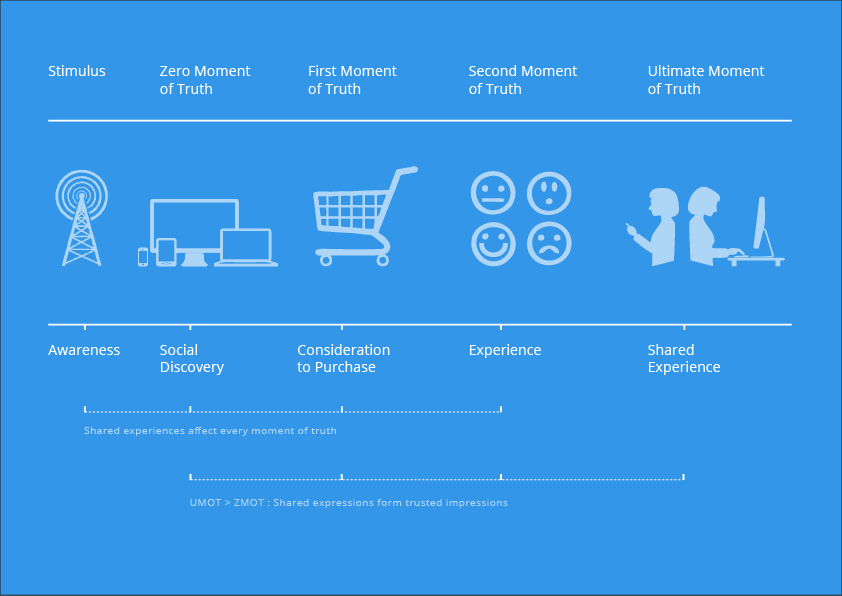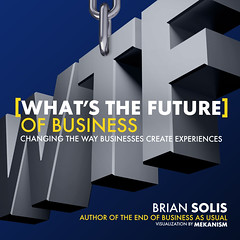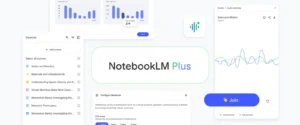In 2012, Google along with Jim Lecinski published a fantastic book that explored how digital customers made decisions in what Google refers to as “The Zero Moment of Truth.” The ZMOT as it’s abbreviated, helps strategists discover relevant strategies and tactics on how to show up at the right place, at the right time and with the right content in a digital ecosystem.
In a world where consumers “Google it” to begin their digital journey, ZMOT revealed that brands need to re-think the connected experience and the resulting click path. But what happens when the web sites that appear in traditional Google search results no longer suffice for someone so connected that impatience becomes a virtue? This is after all someone who begins the journey on a smart phone or tablet tapping review sites and social networks to make information come to them before conducting formal research. Some call it the lazy web. Others refer to it as the social web. In the end, it’s just how people make information come to them. Once they do, it becomes the norm.
Even though web sites technically work on smaller screens thanks to adaptive and responsive design, they’re still web sites. In the very least, they go against the very nature of how someone interacts with the screen and what it’s designed to make possible. Here, it’s less about clicks and scrolls and more about pinching and swipes. That’s not all of course. The intention of a web page is called into question, or should be, in a time of connected consumerism. Step back and think about it for a moment. The information included on web sites isn’t written for you and me, it’s written for the person approving it. When you consider context in addition to the screen in the Zero Moment of Truth, you learn that people aren’t seeking marketing copy, they’re seeking the experiences of others to help humanize information and apply it to their state of mind, needs, and aspirations. Let that sink in because I’ll wager it’s not where a majority of your investments are allocated right now.
So, the truth unfolds…
In my latest book, What’s the Future of Business, I introduced the Ultimate Moment of Truth, that moment where people who convert an experience into discoverable content in any one of the countless social platforms people use to stay connected these days. And in this connected economy, the Ultimate Moment of Truth, or UMOT, becomes the next person’s Zero Moment of Truth, over and over again.
In addition to web sites, landing pages and corresponding SEO and SEM strategies, businesses now must consider how to create experiences in every moment of truth that aren’t just meaningful or remarkable, but also shareable. The future of brands now lies in how UMOT meets ZMOT throughout the customer life cycle. See, without design, these experiences are left to chance. Instead, marketers must begin to architect, foster and optimize positive experiences in each moment that’s native to each screen, efficient in steps, and tied to desirable outcomes.
When Google learned of my work around UMOT, the team reached out to consider how me might work together to help marketers better connect the dots to enhance the ZMOT. Our first collaboration resulted in a whitepaper that’s free to download, “Give Them Something to Talk About: Brian Solis on the Art of Engagement.” I’ve included parts of our discussion below.
Stay tuned for what’s next!
Give Them Something to Talk About
First impressions matter. They matter to people and they especially matter to brands. At Google, we’ve taken a long look at how, increasingly, first impressions are formed online and have a big impact on what we decide to buy. We call this online decision making moment the “Zero Moment of Truth,” or ZMOT for short. In his latest book, What’s the Future of Business: Changing the Way Businesses Create Experiences, Brian Solis, a principal analyst at Altimeter Group builds further on ZMOT’s implications. He zeroes in on how consumers’ first impressions of a brand often come from fellow consumers sharing experiences online. The accumulation of these shared experiences, Solis says, means brands need to pay more attention than ever to customer experience, journeys, and the relationships they nurture.
What does engagement mean for you?
Engagement is really about Actions, Reactions and Transactions; something that I refer to as A.R.T. Engagement, for me, is something that locks in an interaction or exchange. Thinking about engagement in that way inspires a different approach for content creation; you want somebody to feel something, not just see it.
If you think about engagement in this way, is it measurable?
Absolutely. You define your desired outcome and that outcome becomes what you measure. It’s the relationship between cause and effect. Unfortunately, most marketers don’t consider the outcome to be more than some low-level engagement measure — a ‘Like’, a ‘Share,’ a comment — when in fact you could introduce an emotion. If you love something, you share it. This isn’t just about impressions; this is about expressions. You want people to share it and do something and that should be designed into your engagement strategy.
How can you enlist ‘shares’ to support a campaign objective?
No content should be designed today that isn’t inherently shareable. Take the Jeff Gordon Pepsi MAX commercial on YouTube. It comes from that same thinking that goes into Super Bowl commercials, where you stop and go, ‘Oh my god, that is the best commercial I’ve ever seen!’ For some reason marketers only get that creative once a year, but YouTube and the social web are unlocking that type of thinking. Everything you introduce to the social web should have the same caliber of creativity that goes into a Super Bowl commercial.
Is there a tendency for marketers to feel so overwhelmed by technology that they lose sight of their basic instinct for how consumers behave?
Look, I’m a consumer, you’re a consumer. When we talk about the brands we love, it’s very human and natural. But when we try to talk to people like us, we blank out and turn into ‘Marketing Man.’ We lose that human nature, that empathy. If you take a technology perspective, you are forever reacting. The minute you take a step back and say, “What’s the bigger mission?” you start to realize what you are trying to do is change behavior. This relationship between cause and effect is very human. Once you articulate that vision, technology becomes an enabler. It starts to work for you.
Consumers share brand experiences, whether the brand is listening or not. Do brands listen enough to those conversations?
Author Maya Angelou said: “People will forget what you said, people will forget what you did, but people will never forget how you made them feel.” Take Twitter, Facebook, YouTube — what is shared is experiences. Somebody is eating a delicious dinner; that picture is published and shared. Somebody spots a product that makes them feel fantastic; it too becomes a shared experience. There are shared experiences that represent every step of the customer journey. These conversations existed before technology, but now they are searchable, retrievable and building on each other. Shared experiences, in aggregate, become the brand.
What happens when a brand’s marketing doesn’t reflect its image among consumers?
You may say: “This is our brand, this is what it represents, this is what we want you to feel, say, share.” But always ask yourself: “What is the collective experience that is published across the social web?” If you compare the two, many times there’s a disconnect between promise and real world experiences. I refer to this as the ‘experience divide.’ In many experiments I’ve found the brand promise and the experiences that are felt and shared are not even close to being aligned. That’s a problem.
How can brands close that gap?
If we spent less time ‘talking’ about our brand and brand promise and more time designing how we bring it to life, the experience divide would naturally narrow.
What can brands do when online consumers’ first impressions are being shaped by other consumers’ experiences?
These conversations — these shared experiences — they don’t self destruct. They build upon each other, creating a collective index. Search engines plug into this cloud of shared experiences and that Ultimate Moment of Truth, or UMOT for short, of shared experiences becomes the next person’s ZMOT. Experiences form impressions. Impressions become expressions as they’re shared. Expressions form new impressions. The link between UMOT and ZMOT is the future of branding and relationships.

This is a new way of thinking. As a brand you have to create the experiences you want people to have and share, and reinforce that through positive conditioning, so those are the things people find — over and over again. To get people to share more positive things, you have to first make sure they have a positive experience. This is a renaissance opportunity for brands to look back: ‘Why did we start this company? What are we trying to do?’ Because in the social web, it is those experiences that become your brand.
What’s the Future of Business? My new book…#WTF
Connect with me: Twitter | LinkedIn | Facebook | Google+ |Youtube | Instagram







An interesting perspective. As a student in social media, I am fascinated by the data and human perspectives developed through interaction with technology. Thanks!
Cheers!
I completely agree with what you say about making it an experience. Its all about building relationships with consumers so a purchase is more than just a one time thing. Great points!
Thank you Joanna!
Agreed! Although you are certainly branding yourself and your company, you’ve got to maintain that delicate balance of keeping everything personal. Make it seem like you are speaking directly TO individual customers.
I agree with you that first impressions do matter. In the fact that the
first thing you see you are either drawn to the brand or turned off. I also
think it is important and agree with what you have to say about making it an
experience. It’s about connecting with consumers and fulfilling their needs,
wants, and desires and building a strong bond so they come back a second time
to make a purchase.
Thank you for your comment…
Most brands still focus only on the transaction part of engagement forgetting that it really is an endorsement of the previous two, viz, Action and Reaction. The most powerful takeaway – “The information included on web sites isn’t written for you an me, it’s written for the person approving it.” Mobile changes that, and how! Great piece. Thanks.
Thank you!
Solis’s article makes a critical point and provides an apt warning to us online marketers about the pitfalls of today’s technology in the world of digital marketing: We must not forget to relate our digital strategies to the underlying human element that drives consumers & their behaviors online.
The age of big data & online metrics, finely tuned to each social media platform across devices, makes it easy for marketers to become preoccupied with digital strategies for SEO, while loosing sight of the fundamental human instincts that determine how consumers actually behave online.
Today’s consumer is conscious of the Internet’s transformation into a selling tool, and has learned to be discriminating of information sources & their agendas so much so that their methodology for obtaining info has changed completely. Now, vetted & trusted members of their social networks become the first line of inquiry rather than “Googling it” for contemporary consumers. This evolution in the consumer search process marks an upheaval for previous SEO strategies. Now that social networks often initiate consumers’ first brand interaction, the consequent click-thru path will differ and we marketers must account for these changes.
Solis reminds us that keeping in mind the human aspect (consumer motivations, instincts, & social cues) of the online experience will help better pinpoint how users choose to interact with a brand, enabling marketers to accommodate for this in their online campaigns.
What a fantastic comment. This should be a post on its own. Thank you.
Sometimes, as consumers, we forget that a lot of our beliefs on certain brands are formed through other consumers. After reading this post, I agree that most of our thoughts surrounding brands are developed through a lot of shared opinions throughout the internet, or even in person. Sharing information is inevitable, and the key to ensuring that what is being shared about your product is mostly positive, is to give people a reason to talk positively about your product. I agree so much with the fact that brands spend way to much time talking, and not enough time taking action. As they say, talk is just talk. There comes a point where companies must realize that people must be satisfied with their brand, and that can only happen if their brand actually does stand out. As Solis says, this gap between reality and talk can be bridged”If we spent less time ‘talking’ about our brand and brand promise and more time designing how we bring it to life.”
First impressions are everything. With the internet taking over, we must realize that the ability to share these first impressions can be done instantaneously. Instead of just sharing through word of mouth, these can be posted anywhere…Twitter, Facebook, etc. Once these experiences are shared through these networks, that’s when they start building. Companies should keep in mind your points about being personable with consumers, as that increases positive brand talk. Thanks for your post- thoroughly enjoyed it!
Thank you. And I must say that I thoroughly enjoyed your comment.
Cheers!
One upping my comment, Gab. Not even mad 🙂
Great post and concept Brian, thanks for sharing.
For marketing teams, having customers talk about and share
positive experiences about a brand – either a product or a service – is the ‘ultimate’
objective. Often it happens by itself – consumers simply have a positive
experience and share on Twitter, Facebook, etc. Of course, those consumers who
have a negative experience can do the same.
The challenge for marketers is twofold – encouraging those
who are inclined to share and nurturing those who might not have thought of
sharing. Enabling and promoting positive sharing by consumers who might not
have shared their experiences is helped if there are programs to encourage it.
Building programs that encourages and promotes ‘positive sharing’ can have a
huge impact in terms of customer loyalty and lower cost of customer acquisition.
Excellent graphic BTW.
Bob
Absolutely. Thank you Bob!
I really enjoyed reading this post because it stands as a reminder that connecting with consumers is more than just counting shared content and exposure–it’s about tapping into your audience’s emotional connection to the brand. In this way, companies and organizations can create a lasting relationships with their consumers. All too often, it seems that companies are too focused on the bottom line. In other words, they think too short-term. While it is certainly important to meet the bottom line (and exceed it, if possible), it’s more worthy to create a relationship with the people who use/buy your product or service. I think companies should be thinking further forward.
Brian: I loved how you described the importance of a positive first impression. This applies at all times, but especially when it comes to brand loyalty. In my own experience engaging with brands on social media, I’ve found it to be largely beneficial. In talking directly with brands through Twitter, I’ve connected with several people who share my interests. And when I read or share brand content through social media, it’s usually in a positive light. However, I do see a good amount of negativity online about certain brands. As far as first impressions go, I personally would trust what a friend or family member says about a brand, and that would definitely influence my loyalty to that company/organization. What would you say is a good way for companies to go about addressing these first impressions? Should they reach out to them directly or smooth it over with other types of promotions (i.e. contests, giveaways, etc.)?
Overall, great post! As a graduating senior of PR, I loved reading your professional standpoint on brand loyalty and first impressions. Thank you, Brian!
Really? I have to stop by sometimes to confirm why I don’t follow you on twitter or read your blog. This is gibberish dude. You on mushrooms? Just asking.
Do you know how little we share online? It is like 0.05% of our daily life. You are over weighting digital and dissing real life. Real life is where it is at. Real life off line is where most decisions are made.
For example Pepsi. 39 million views not unique viewers….over a year. So maybe 20 million unique viewers? 25 Mil? and they have 3 bil customers. So not bad 0.8% of customers saw the spot. Pepsi needs to reach I bet 100 million a day in the US. Vs the 100k/day that you tube spot has. How many bought because of the spot? Unknown. Don’t overweight how many people loved the spot and watched it many times but never bought the soda.
I shared maybe 1 of my 1500 experiences today. Added up among the many it looks great! Like the 25 mil posts on Facebook during last year’s Superbowl. Not bad. But that means probably only 3-5 mil of the 160 mil viewers shared on Facebook about the game. Not bad. But nothing amazing. Math kills marketing every time because marketers over value. You need to find the real value.
All the branding in the world won’t help you if there isn’t some sort of engagement stemming from the branding process.
Concordo com o que diz sobre a experiência. No caso, a construção de relacionamento com o consumidor, pois uma compra é mais do que apenas uma coisa de cada vez… daí é que vem a fidelidade!
Gracias!
Thank you so much for sharing great creative resources to follow! I really appreciate it.
Hey pas bête. Ou alors une boutique bien cool avec des conseils sur le jardinage c’est ravissant-jardin.fr.
A essayer 🙂